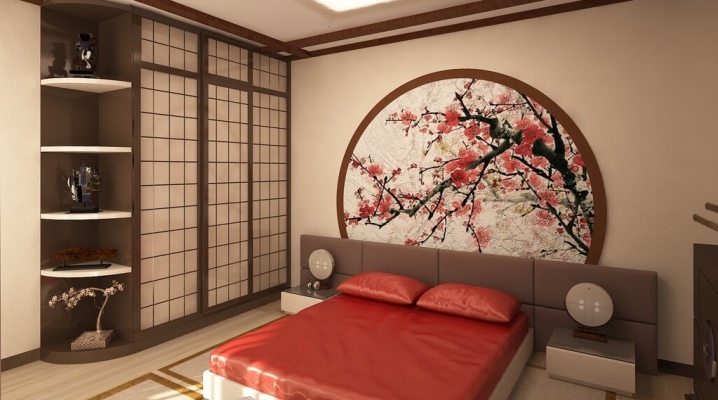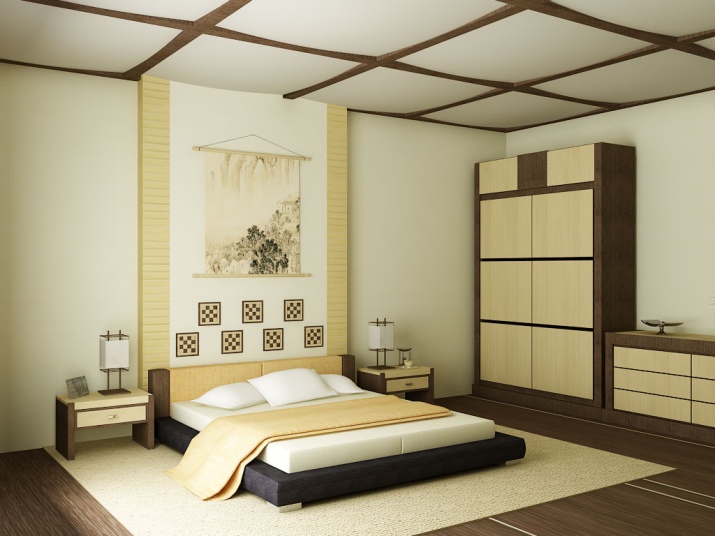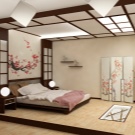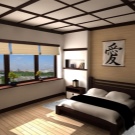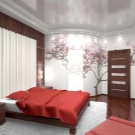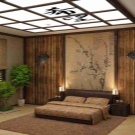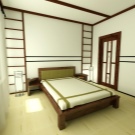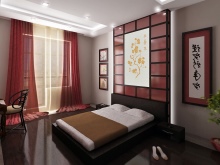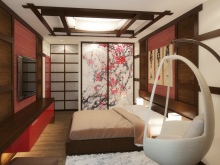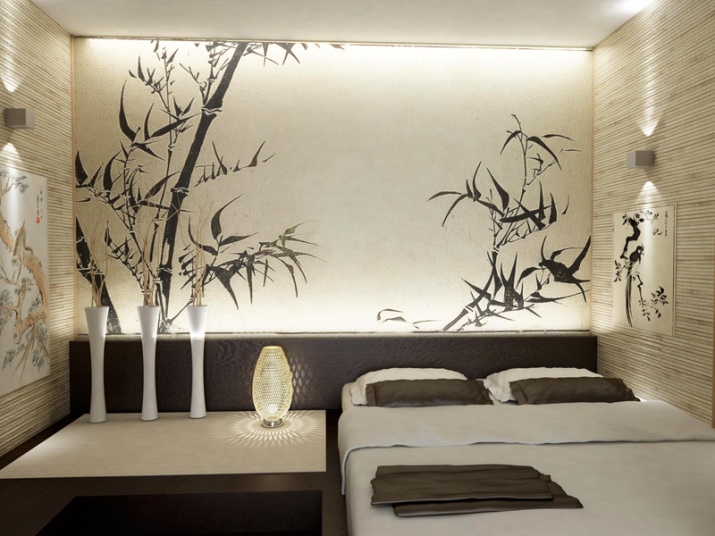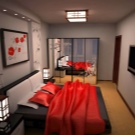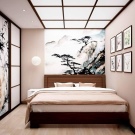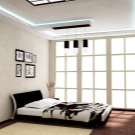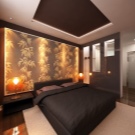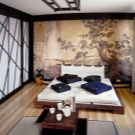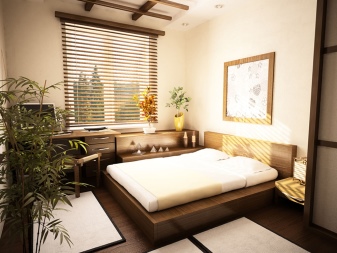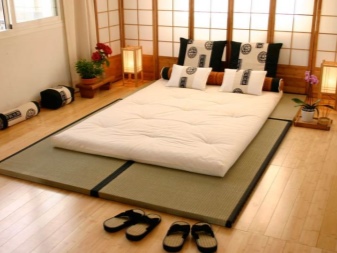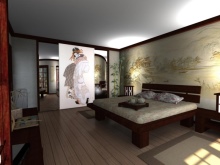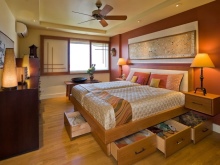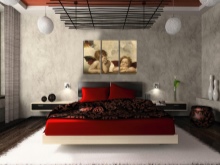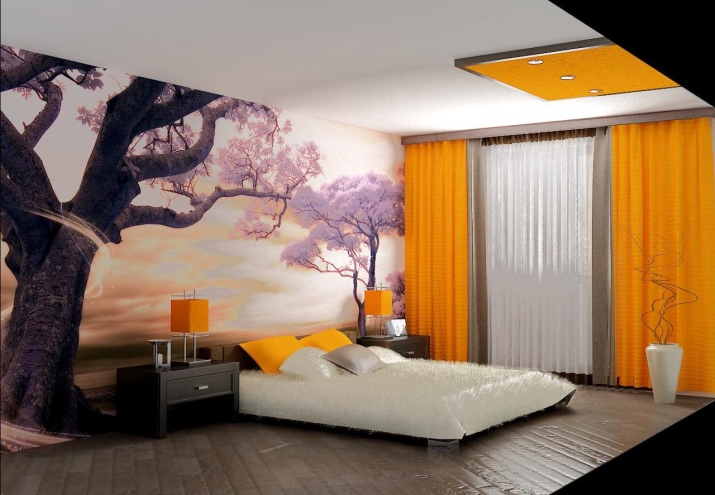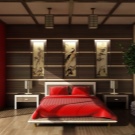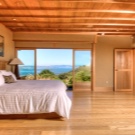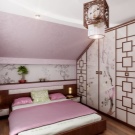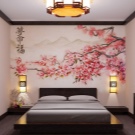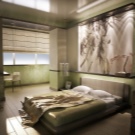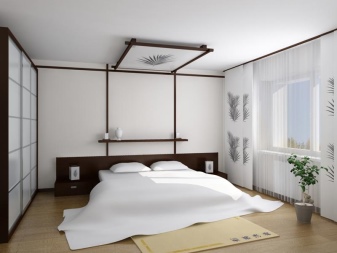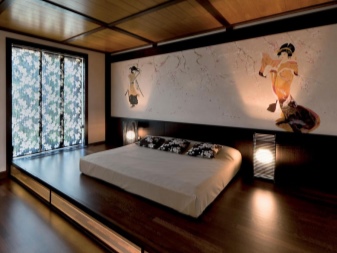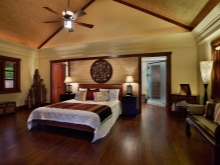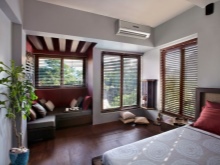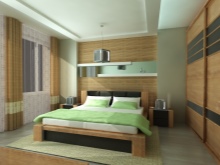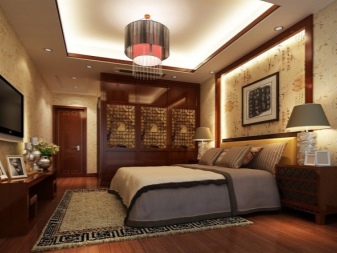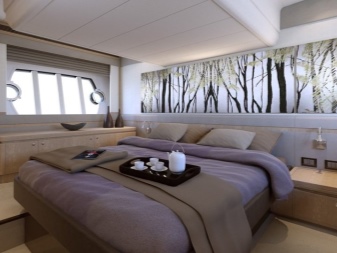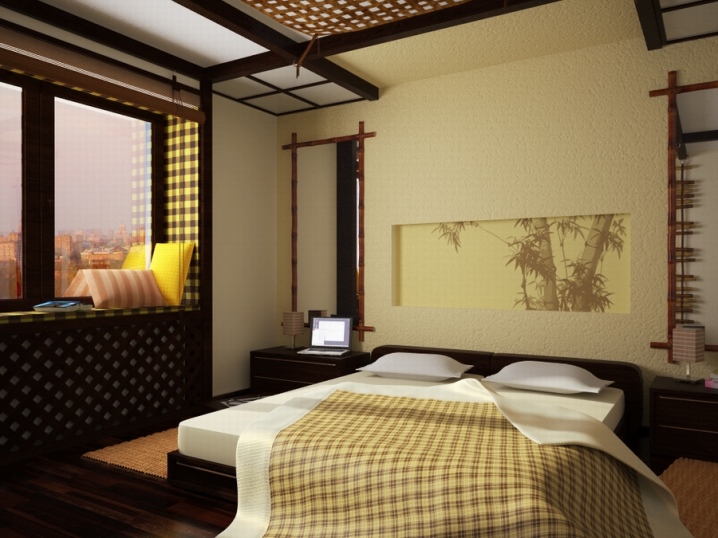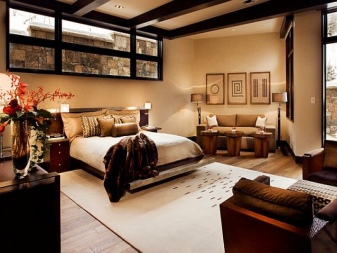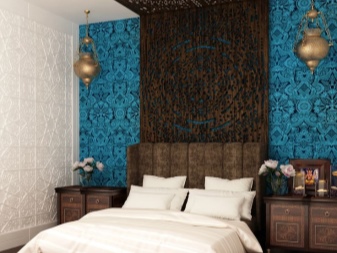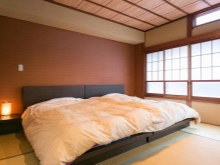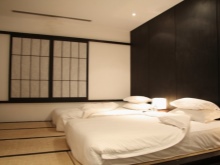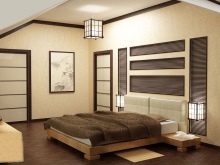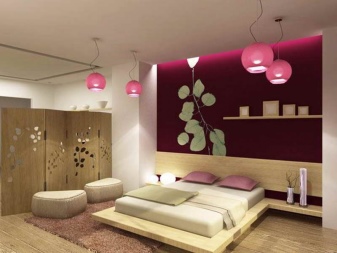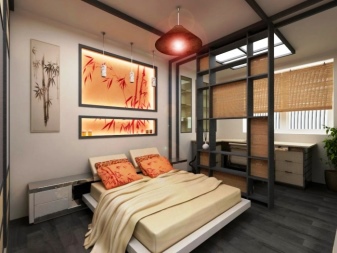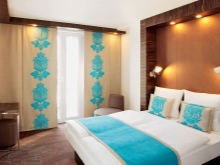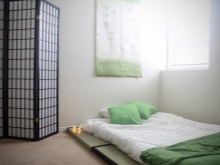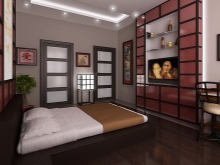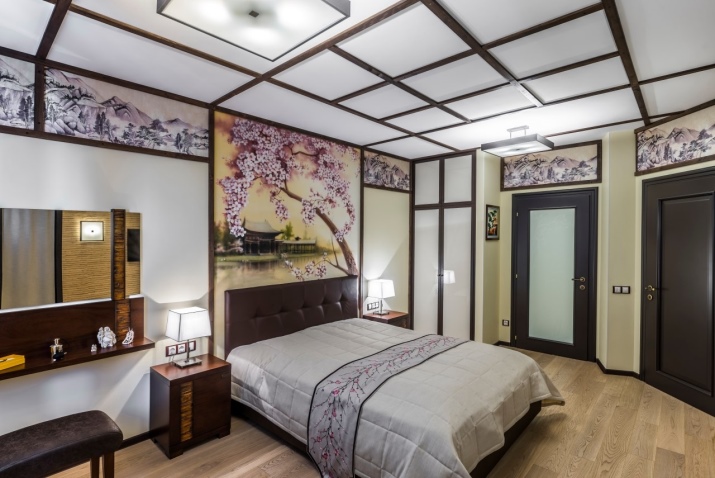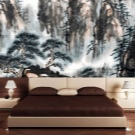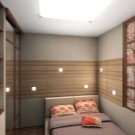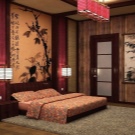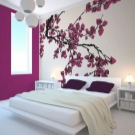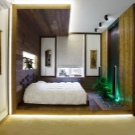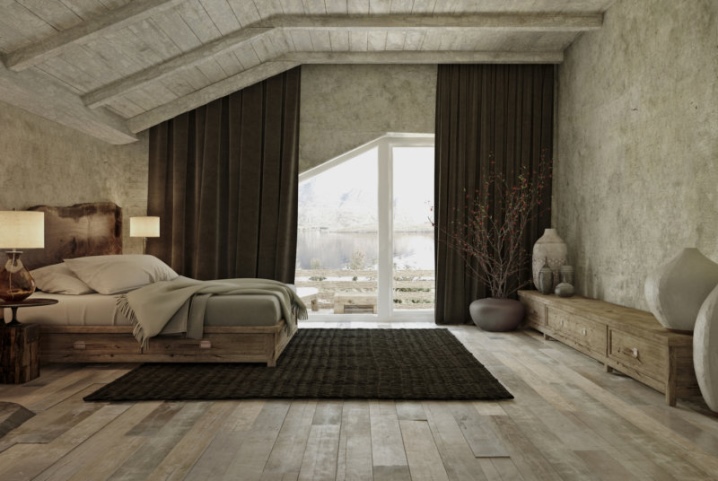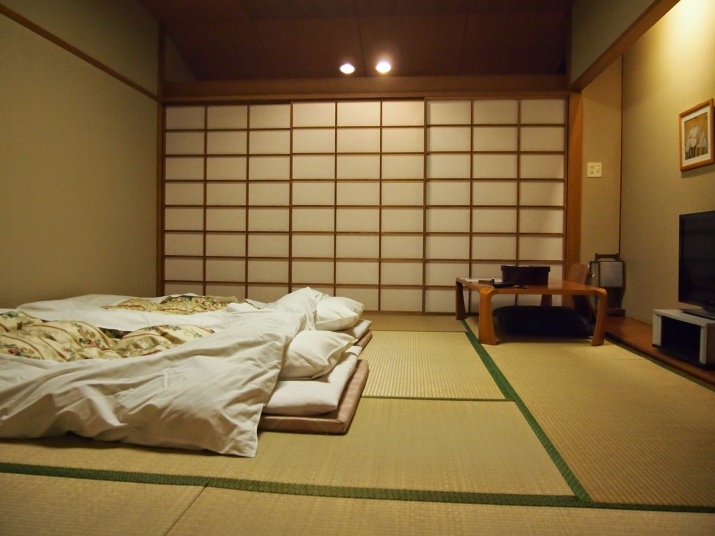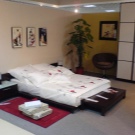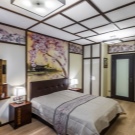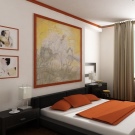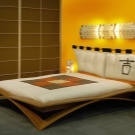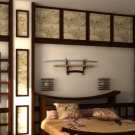Japanese style bedroom
Beautifully equip a room - not an easy task. It is necessary to choose the appropriate furniture, accessories, decor, consider different finishes. All this should be beautifully combined with each other, and the room itself should be functional, comfortable and aesthetically attractive. An even more difficult option is to equip the interior in accordance with the principles of a particular stylistic direction. Today, there are many, for different tastes.
Oriental themes, especially Japanese style, always seem to be something mysterious, sublime, and sophisticated. This direction is the best suited for the design of the bedroom.
Features of Asian style
Briefly identify the main criteria of the Japanese style can be almost in two words - tradition and minimalism.The laconic design and the absence of lush decorative additions are easily explained: Japan is a very small and densely populated country. This could not but leave its imprint on the formation of traditional Eastern style in the design of the premises. This style is perfect for small-sized apartments, such as "Khrushchev".
A bedroom in Japanese style is made according to the following principles:
- Minimalism. Free space, devoid of a large number of decorative ornaments and accessories, allows you to create the most optimal conditions for relaxation and rest after a hard day's work.
- Naturalness Human proximity to nature is strongly emphasized with the help of natural materials used in the decoration and interior decoration (wood, natural silk, bamboo, linen, cotton). The color scheme should also be close to natural (brown, green, dark red).
- Functionality. Proper arrangement of furniture, shelves, cabinets allows you to perfectly accommodate all the necessary things and at the same time save a lot of free space.
The Japanese style in the design is most suitable for people who are tired of the hectic life in the metropolis and are striving for natural beauty and solitude. This style in the interior of the bedroom is recommended for connoisseurs of concise, simple design solutions.
Variants of finishing the room do it yourself
Traditional Japanese housing is very different from European dwelling. There are no heavy and massive walls. Zoning of the room is made with the help of mobile partitions-screens made of thin rice paper. Today, such screens can be used to decorate a bedroom in an oriental style or to divide a room into several separate corners, for example, for reading or sleeping.
For the decoration of the walls, materials are used that are kept in a light, soft color range. It can be:
- Wallpaper, for example, bamboo or textile. It may also be a paper version, decorated with the help of Japanese characters or traditional ornaments (sakura, cranes, fans);
- wooden panels (this design is very similar to traditional Japanese sliding partitions);
- textile;
- paint (painted walls can remain monotonous or they can be decorated with a stencil pattern).
When making the ceiling is recommended to follow the following tips:
- Traditional Japanese architecture implies a square or rectangular ceiling. (The same applies to elements that complement and decorate the ceiling).
- Materials can be of both synthetic and natural origin. Of course, the second option is preferable (wood, fabric).
- Bright hues. Ceiling and wall coverings can be made in the same color solution, close to natural. As a decoration of the ceiling, you can use light, restrained ornaments.
As a ceiling covering are used:
- beams (the ceiling is divided into regular rectangles using beams). They are simply mounted on a painted ceiling or additionally tightened with paper and cloth;
- stretch ceiling (can be glossy or matte, monophonic or decorated with a delicate, inconspicuous pattern);
- false ceiling (ideal if the ceiling profile is presented in a contrasting color with respect to the plates).
The device and the design of the floor in Japan is given a very serious and important. One of the traditions of this country is walking barefoot, especially when it comes to the bedroom. Ideal option - a covering from a natural tree (a parquet, a laminate). On top you can add a bamboo mat, rattan cloth or matting. The disadvantage of these natural materials can be quite quick wear, so instead of them it is possible to use a bedside rug decorated with oriental ornaments.
The windows in the Japanese-style bedroom can be decorated using fabric blinds or light curtains of linen, cotton or bamboo straw. They should be decorated with national oriental ornaments.
Color spectrum
Oriental style implies the maximum human approach to the natural habitat. Therefore, the color range for the design of walls, ceiling, floor, decorations, accessories and furniture should be maintained in such shades. These are the colors of earth, plants, air, stone. Neutral palette can be diluted and more vivid, contrasting inclusions. This may be a textile, a lamp, a screen or another element of the interior.
As the main background for the design of walls, you can use different shades of milk, sand, beige, cream. More clearly outline the boundaries of the walls will help the contours of black, burgundy, brown. It is recommended not to use accessories, decorations and textiles of poisonous, saturated colors.
Choose and put furniture
The interior, designed in oriental style, implies the use of one main accent in the room, without dispersing attention to several smaller elements. In the bedroom, the accent is a bed or a sofa. Traditional furniture for sleeping should have a small height. A wide mattress should be placed on the podium or lean on small legs. There should be no magnificent headboards, walls and armrests.
Nearby you can arrange a bedside table for tea and a small nightstand. It is better not to use bulky closets and racks. For storage of useful wardrobes or built-in lockers / niches.
For the manufacture of furniture used lightweight durable materials of natural origin (wood and bamboo). Cotton or natural silk can be used for upholstery.
Lighting
The bedroom should be well lit. In the daytime - with the help of natural light, in the evening stylized lamps will come to the rescue. At the same time, the lighting should be sufficient, but not intrusive, but muffled and diffused. To do this, you can use paper or textile lampshades, matte lamps, special light diffusers.
As for specific light sources, these are, most often, not floor or table models. Ceiling lamps emit very soft, dim lighting without abrupt transitions from light to shade. You can use spotlights or LED strip around the perimeter of the room.
Japanese lamps are usually made in clear, simple forms and painted in black, white, brown or yellow. Flashlights can be paper, bamboo, textile, glass.
Decor
Since the main idea that runs through everything related to Eastern style is minimalism, accessories and decorations in the interior should be a bit. However, they are necessarily present. Therefore, their choice should be approached especially carefully. Each of them should give the interior expressiveness and refinement.
Open shelves or tables can be decorated with porcelain plates with dried rose petals or other flowers. These can be scented candles or porcelain figurines.
Next to the bed you can put a beautifully shaped floor vase. Flower arrangements and plants occupy a special place in the interior. This may be a traditional ikebana, dwarf pine, mandarin or another tree.
As other decorations and accessories you can use:
- Tatami instead of bedside rug;
- Stylized linen with cranes or cherry blossoms;
- Sliding screen decorated with traditional Japanese ornaments;
- Japanese lanterns on the bedside table;
- Graceful netsuke, placed in open shelves;
- Japanese dolls and figurines.
- Samurai swords and huge fans hung on the walls.
